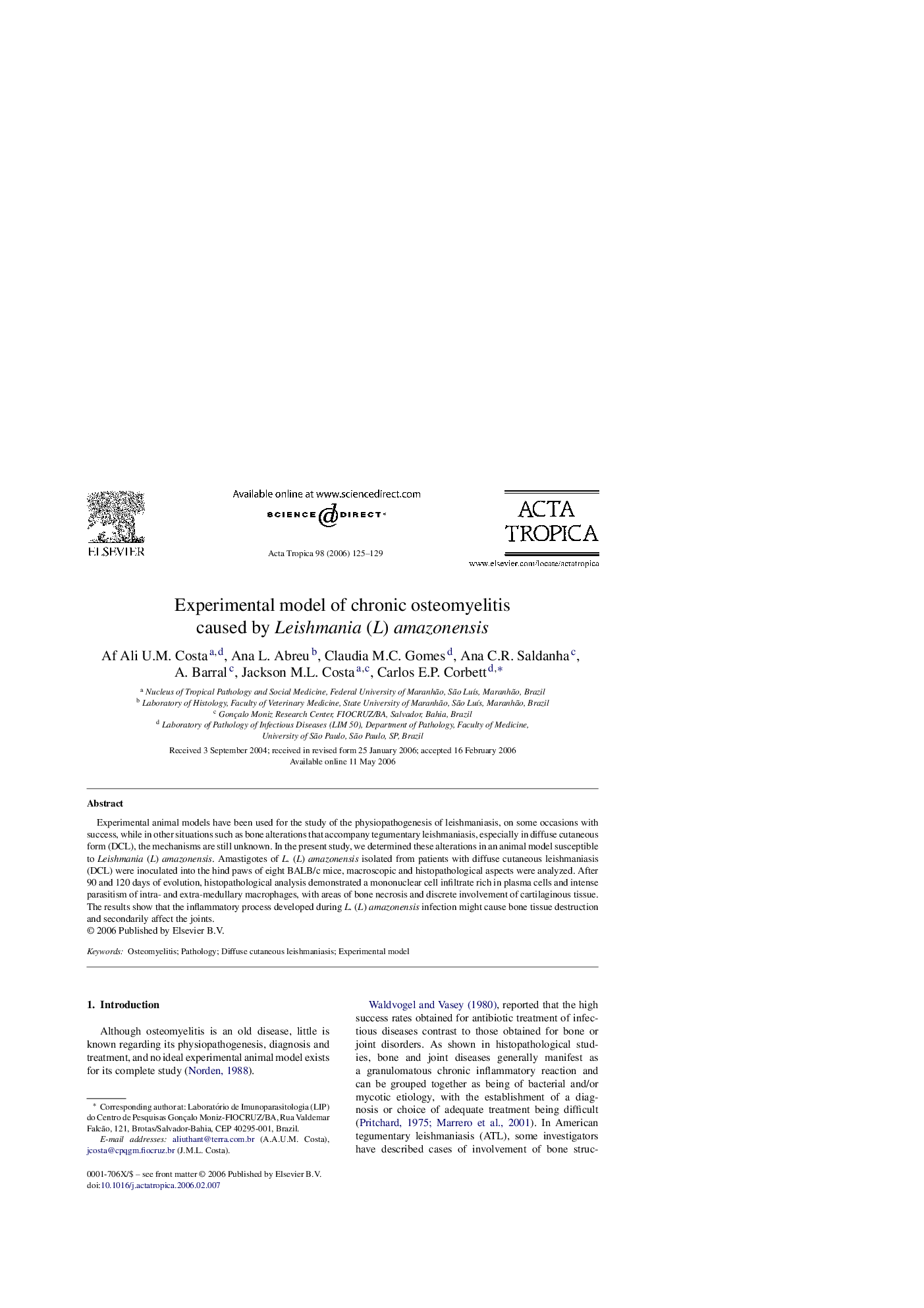| Article ID | Journal | Published Year | Pages | File Type |
|---|---|---|---|---|
| 3394716 | Acta Tropica | 2006 | 5 Pages |
Experimental animal models have been used for the study of the physiopathogenesis of leishmaniasis, on some occasions with success, while in other situations such as bone alterations that accompany tegumentary leishmaniasis, especially in diffuse cutaneous form (DCL), the mechanisms are still unknown. In the present study, we determined these alterations in an animal model susceptible to Leishmania (L) amazonensis. Amastigotes of L. (L) amazonensis isolated from patients with diffuse cutaneous leishmaniasis (DCL) were inoculated into the hind paws of eight BALB/c mice, macroscopic and histopathological aspects were analyzed. After 90 and 120 days of evolution, histopathological analysis demonstrated a mononuclear cell infiltrate rich in plasma cells and intense parasitism of intra- and extra-medullary macrophages, with areas of bone necrosis and discrete involvement of cartilaginous tissue. The results show that the inflammatory process developed during L. (L) amazonensis infection might cause bone tissue destruction and secondarily affect the joints.
